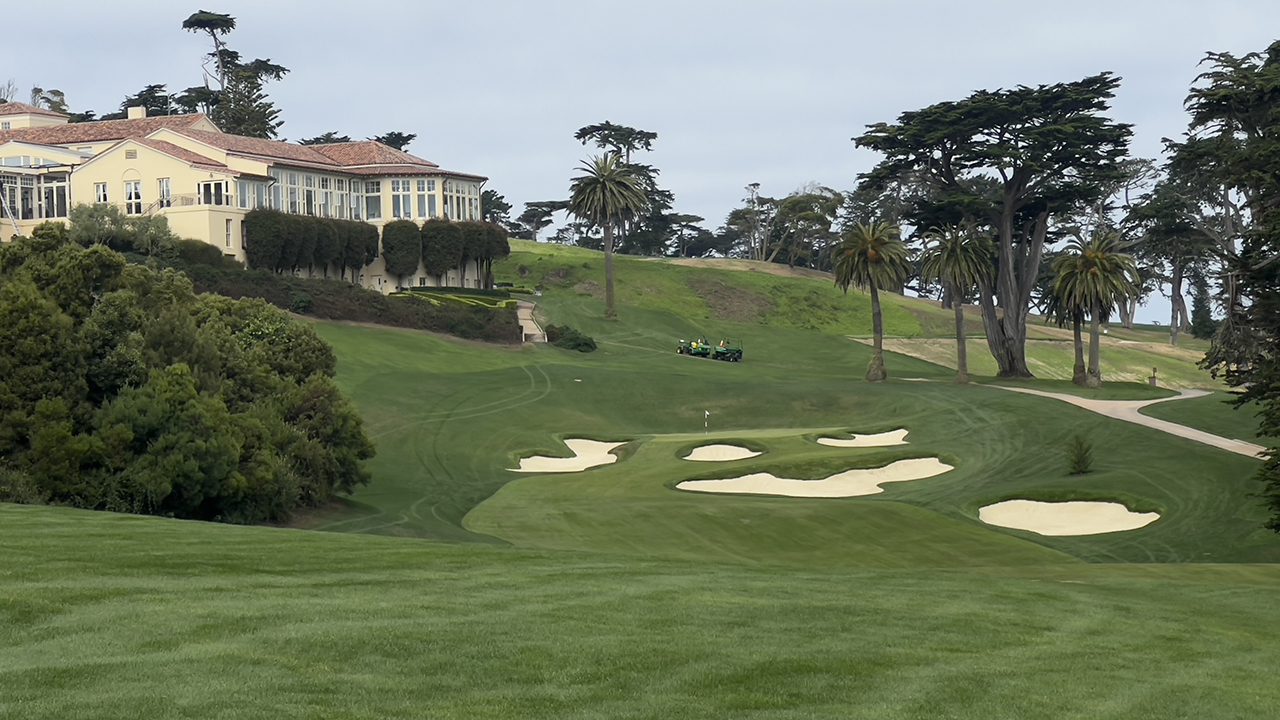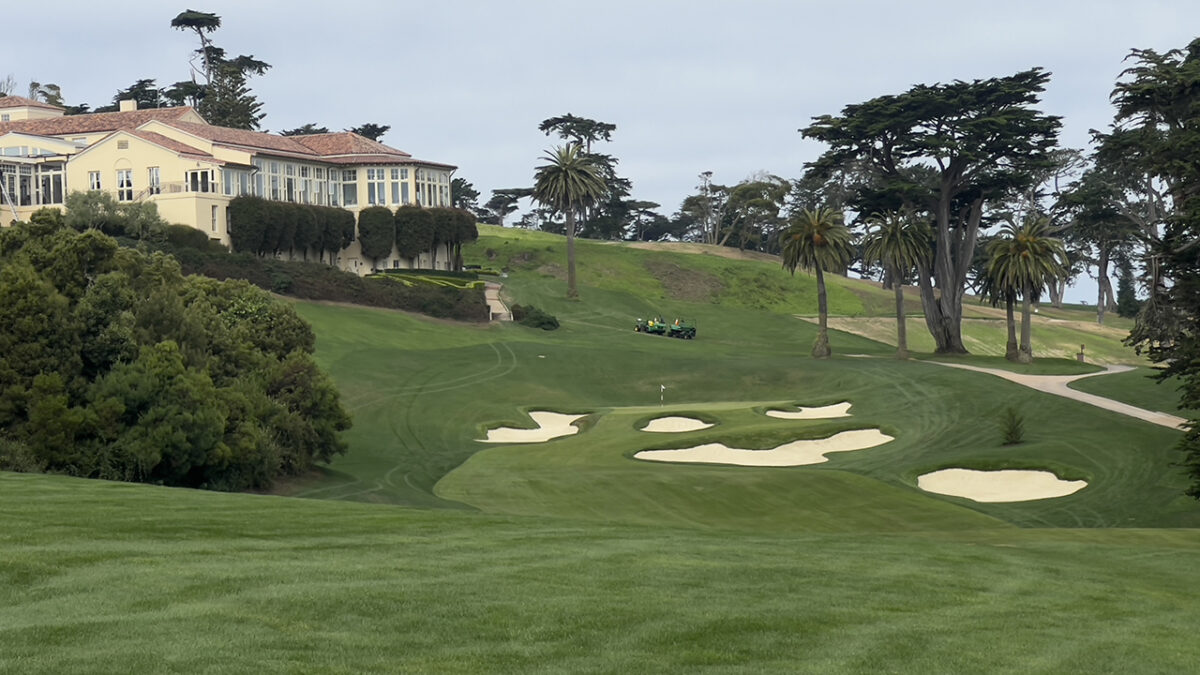SAN FRANCISCO – From the first tee to the 18th green, golfers will notice plenty of differences on the recently renovated Lake Course at the Olympic Club, a layout that already had seen plenty of changes since it was first designed in 1924.
In 2020, Gil Hanse and Jim Wagner were hired to renovate the Lake Course, which has several top-tier professional and amateur events scheduled for coming years. The layout ranked No. 8 on Golfweek’s Best 2023 ranking of top private courses in California, and it was No. 44 on Golfweek’s Best 2023 list of all classic courses built before 1960 in the U.S.
As they did at several other major championship courses including 2023 U.S. Open host Los Angeles Country Club, Hanse and Wagner planned for the future by studying the past.
Hanse Design associate Tommy Naccarato said that meant researching old aerial photos from the 1920s and ‘30s as well as Spring Valley Water Company’s plans. That allowed the team to identify fairway bunkers that had been abandoned over the decades, and the historic research also provided clues on fairway widths, approaches and green surrounds.

Ultimately the Hanse plan would call for the reintroduction of fairway bunkers on Nos. 4, 9, 14, 16, 17 and 18. Other refinements included the expansion of greens by roughly 33 percent to provide more pinnable space, widening fairways by roughly 25 percent to better fit the land, expanding approaches to greens to offer more ground-game options and converting numerous green surrounds from fairway to rough for consistency course-wide.
The final piece of the plan was the creation of a new seventh hole to better connect Nos. 6 and 8 after the 2009 shifting of the tees on No. 8. The new No. 7 remains an uphill and drivable par 4, but the green was shifted down a hill to the right. The tee shot offers numerous options, the best of which come when players challenge a new fairway bunker about 50 yards from the green, Hanse said via zoom at a September reopening event.



Players can notice the differences from the first tee shot, where the removal of dense shrubs between the first tee and second green has opened a view across the property and down to Lake Merced, all the way to the 18th, where fairway bunkers were added and the green was expanded.
All told, the refinements have provided the Lake Course with a more consistent Golden Age look and feel as well as improved playability for day-to-day play.
The Lake Course offers a rich history that Hanse and Wagner were able to tap into. William Watson and Sam Whiting designed the first version of the Lake in 1924, but storm damage led to a Whiting redesign in 1927.
Starting in 1955 the Lake Course became a familiar home to USGA championships, hosting U.S. Opens in 1955, ‘66, ‘87, ‘98 and 2012. It also hosted the U.S. Amateur in 1958, ‘81, and 2007, as well as the U.S. Women’s Open in 2021.
Throughout its championship history, plenty of work was done to the course while leaving the routing intact. Before the 1955 U.S. Open, architect Robert Trent Jones Sr. toughened the course. In 2009 the uphill par-3 eighth hole was shifted to the north and the greens were converted from poa to bent grass. And in 2016 a bunker renovation was executed under the direction of Bill Love.


The course played beautifully during a media event thanks to the work of director of grounds Troy Flanagan and his team that worked closely with Hanse’s team, including shaper Shaymus Maley who was on site every day throughout the project.
“Tapping into his knowledge and enthusiasm allowed us to do a better job and be much more responsive on how the golf course plays,” Hanse said of Flanagan. “I can’t think of better greens I’ve played on for an opening day.”
The praise of the course was music to the ears of Olympic Club president Jim Murphy, who led the club through what is always a nervous time for a membership.
“First there was uncertainty, then there was anticipation and now there is jubilation,” Murphy said of his members’ response to Hanse and Wagner’s work.
Those sentiments were echoed by longtime Golfweek’s Best rater and Olympic Club member Pat Murphy, who said, “I’ve been a member of the Olympic Club for 65 years, and previously served as green chair, on the board and as vice president. I feel this renovation has done a great job of honoring our past and positioning us for the future. The golf course is as beautiful, fun and engaging as it has ever been in all my years.”



There is no doubt the course refinements will be embraced by the membership, but perhaps the bigger question is how will the course play in championships. The Lake Course is set to host the 2025 U.S. Amateur, 2028 PGA Championship, 2030 U.S. Women’s Amateur and 2033 Ryder Cup.
The amateur events and the Ryder Cup should be able to tee off while maintaining the added fairway width thanks to their match-play formats. It will be interesting to see how chief championships officer Kerry Haigh and the PGA of America prepare the course for the 2028 PGA Championship, for which conventional wisdom would suggest the narrowing of fairways to add challenge. But a potential ball rollback, more hole locations from which to choose and more rough around the greens may see them embrace the added width – we can only hope.
